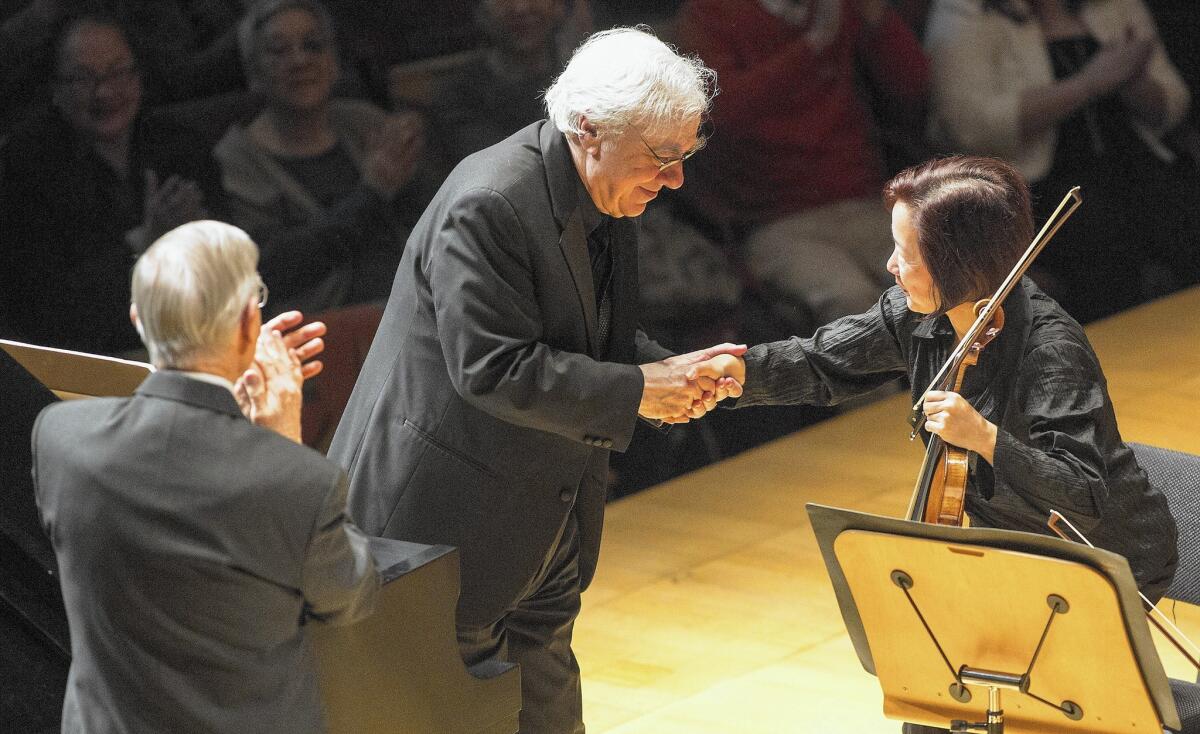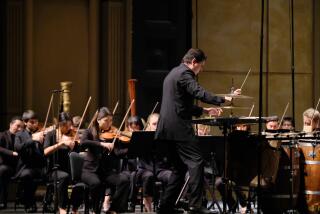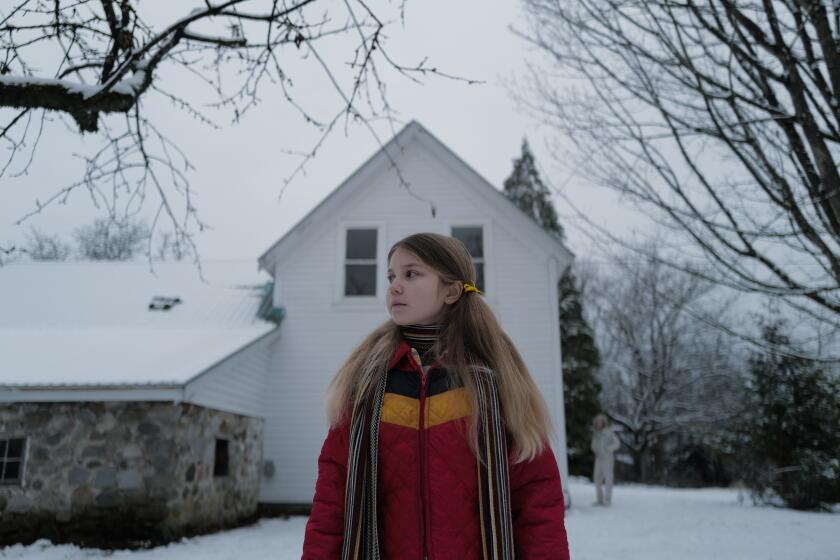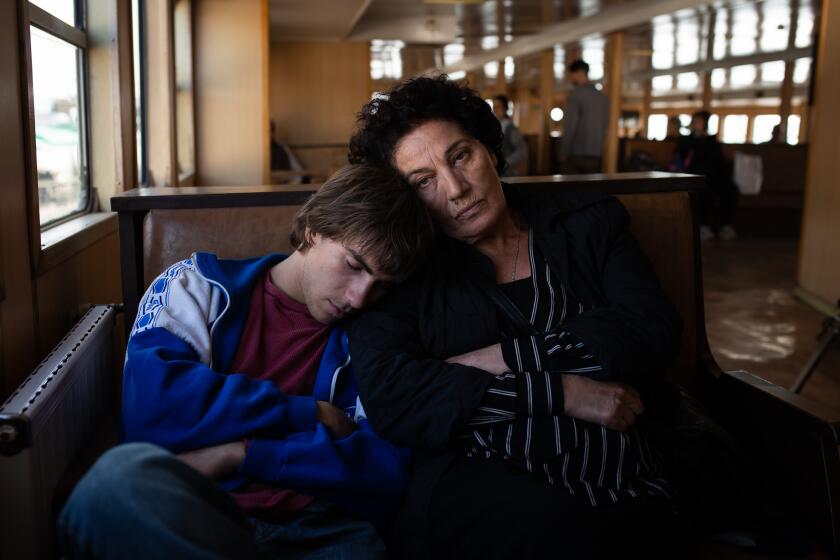Review: Herbert Blomstedt leads L.A. Phil’s commanding Bruckner performance

Silicon Valley, you’ve surely noticed, has become health conscious. Apple markets medical apps. One of Google’s latest futuristic endeavors is a cancer nanodetector. But the Bay Area’s entrepreneurial techies have missed a fountain of youth in its backyard — the San Francisco Symphony.
The Guardian newspaper in London on Saturday reminded us that when Pierre Monteux, San Francisco’s music director from 1935 to 1952, was 86, he expected a 25-year contract from the London Symphony. Current San Francisco music director Michael Tilson Thomas has been a young conductor full of fresh, yet ever maturing, ideas for half a century. Last month, he conducted the Los Angeles Philharmonic after having just turned, but hardly appearing, 70.
On Saturday night, Herbert Blomstedt, Tilson Thomas’ San Francisco predecessor, was on the podium at Walt Disney Concert Hall to conduct the L.A. Phil. He is tall and stands ramrod straight. His conducting style is vigorous. Not bothering with a baton, he throws his body into shaping phrases. He is master of granitic ferocity and also grace.
For his third curtain call after a commanding performance of Bruckner’s Ninth Symphony, Blomstedt dashed onstage for his final bow. Animated orchestra players responded with a collective look that was something between awe and utter delight. Yes, Blomstedt dashed. The Swedish conductor is 87!
The orchestra doctor was back. Blomstedt, who has a 34-year history guest-conducting the L.A. Phil, is a superb orchestra builder welcomed as a miracle worker who can tune up any ensemble. The L.A. Phil has been sounding very good lately. On Saturday, its playing was on every level exceptional.
The program revolved around valedictory works. It began with Mozart’s last piano concerto, written the year of the composer’s death. Richard Goode was soloist. Bruckner never finished the fourth movement of his Ninth, and he was still putting finishing touches on the Adagio the day he died.
As perhaps a corollary to our obsession with longevity, late style has been a theme this year. But that can mean many things. Beethoven’s “Missa Solemnis,” which is what Tilson Thomas conducted with the L.A. Phil here last month (as Blomstedt coincidentally did with the L.A. Phil three years ago) represents a bold composer’s visionary confidence.
Also last month, the orchestra gave the U.S. premiere of Henryk Górecki’s posthumously orchestrated Fourth Symphony, revealing a reclusive composer still moving forward. The Pacific Symphony’s offering of two songs from Leonard Bernstein’s last work, “Arias and Barcarolles,” last week were moving remembrances of childhood and the mysteries of a life the composer was about to leave.
Mozart completed his concerto Jan. 5, 1791; he died Dec. 5. But those who think of the concerto’s simple, gentle style as leave-taking sentimentalize. Mozart was 34 and a death that our modern medicine could have forestalled was not yet a presentiment.
The musical character of the concerto is that of a composer much in demand working fast. But there are wondrous subtleties, and those were what attracted Goode’s attention.
The pianist, another senior figure, played with his characteristically penetrating tone, rounded phrasing and introverted lack of theatricality. There was airiness to his tone. Melodies floated rather than settled. Passagework was ethereal. You could think of leave-taking if you liked. Or not. But there was a definite distancing, as if Goode were retrieving something from another time and place.
Blomstedt was more businesslike and down to earth. His concern seemed to be with simply keeping the orchestra grounded. But that also made the marvels in the score, such as an operatic little wind phrase near the end of the first movement’s exposition and again at its recapitulation, sound as if it were bestowing a kind of benediction on the performance.
The greatness of Blomstedt’s Bruckner was in its utter surety. The three completed movements mean the symphony ends with a great Adagio that builds to a formidable climax, to which Blomstedt brought incredible power, and then it ends quietly. That can be over-romanticizing.
Blomstedt instead appraised the score’s overall structure. The doctor at his practice here cared for the complete body. Every element of Bruckner — those incredible inner details, the rhythmic humming, the periodicity and the surprises, the rich contrapuntal layers of orchestral texture — worked together to present a picture not of death and decay but vitality and health. The pulse was incredibly strong.
Could Blomstedt’s enduring physical strength be a product of his unfailing strength of purpose? Google, get on this.
More to Read
The biggest entertainment stories
Get our big stories about Hollywood, film, television, music, arts, culture and more right in your inbox as soon as they publish.
You may occasionally receive promotional content from the Los Angeles Times.







